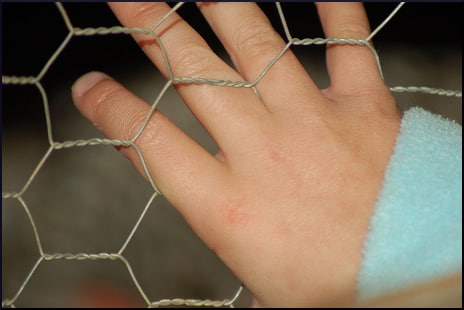
To follow along with the “connect the dots” metaphor, these things have been shown to be interconnected to varying degrees: the gut microbiome, allergy, addiction, leaky gut syndrome, inflammation, and autoimmune disease.
In the gastrointestinal tract, food is broken down, or digested, to make its nutrients available to the rest of the body. The microorganism H. pylori bores holes in the intestinal lining to let things pass through that shouldn’t. Hyper-permeability of the intestinal lining is also known as Leaky Gut Syndrome. As a comparison, picture the difference between mosquito netting and “chicken wire” fencing. One will keep out mosquitoes; the other will not.
The unsavory intruders are molecules of toxins, viruses, yeasts, bacteria, and undigested food. Once they hit the bloodstream, their presence summons the body’s defense troops, and the ensuing warfare generates the chronic irritation known as inflammation, and often, autoimmune disease. A person with an autoimmune disease is basically allergic to herself or himself.
One of the most ancient truths known to humankind is that poison or decomposed food, can cause a human to vomit. This expulsive reflex originates not in the stomach, but in the brain. But how does the brain know when it is appropriate to help the body preserve itself by throwing up? Childhood Obesity News has discussed the theory that the brain is informed by the gut microbiota.
Julie Daniluk is a holistic nutritionist whose knowledge exceeds the theoretical. As a world traveler, she picked up a digestive infection. Death was narrowly avoided, but the condition destroyed the lining of her gut and for a few miserable years she was in constant pain and allergic to almost everything.
At some point she turned things around and embarked on an intense campaign to repair the lining of her digestive system, a task that took four years. Daniluk explains:
How it works is that when you eat a food you’re allergic to, intestinal immune cells perceive this food as a harmful invader. Your body goes into attack mode. Blood flow to the intestines increases so that leukocytes (white blood cells) can fight the allergen. The intestinal tissue becomes locally inflamed with a phalanx of cellular immune system soldiers. Inflammation causes the intestinal tissue and surrounding blood vessels to become more permeable. This increases the number of leukocytes that flood the areas initially exposed to the food allergen.
The intestines have their own nervous system that communicates with the brain, and the signals go both ways. Here, in the words of John F. Cryan and Timothy G. Dinan, is an elegantly phrased illumination of the topic:
It is now increasingly being recognized that the gut — brain axis provides a bi-directional homeostatic route of communication that uses neural, hormonal and immunological routes, and that dysfunction of this axis can have pathophysiological consequences.
It is now clear that alterations in brain — gut interactions are associated with gut inflammation, chronic abdominal pain syndromes and eating disorders, and that modulation of gut — brain axis function is associated with alterations in the stress response and behavior.
Next time, more about the relationship between the microbiome and addiction.
Your responses and feedback are welcome!
Source: “The Link Between Food Allergies, Leaky Gut & Happiness,” JulieDaniluk.com, 2013
Source: “The Link Between Food Allergies, Leaky Gut & Happiness,” JulieDaniluk.com, 01/14/16
Source: “Mind-altering microorganisms: the impact of the gut microbiota on brain and behaviour,” Nature.com, October 2012
Photo credit: Carly & Art via VisualHunt.com/CC BY-SA

 FAQs and Media Requests:
FAQs and Media Requests: 











